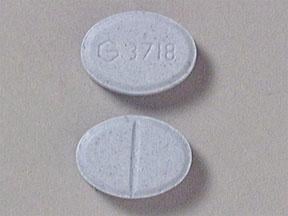
Triazolam Coupons & Savings Card – Discount Prices from $19.59
Generic for: Halcion
My prescription
Edit
0.25MG, Triazolam (30 Tablets)
Select pharmacy

CVS
$22.17
COUPON PRICE
Walgreens
$19.59
COUPON PRICE
Walmart
$24.66
COUPON PRICE
Albertsons
$63.98
COUPON PRICETriazolam savings card
Show this card to your pharmacist
Walgreens
$19.59
BIN
ID
PCN
GRP
019876
LHF8161A5B
CHIPPO
LHX
Powered by
More prescriptions for insomnia
More prescriptions for insomnia
Price history for Halcion (brand) & Triazolam (generic)
30 Tablets, 0.25MG
Average retail price for Halcion
Average retail price for Triazolam
Average SaveHealth price for Triazolam
Our price history data is based on aggregated prescription data collected from participating pharmacies in America. Our prescription data updates daily to reflect the latest price changes. If you notice a missing data point, it means there wasn't sufficient data available to generate a monetary value for that date.
We analyzed Triazolam prices for (0.25MG, 30 Tablets) over the last 12 months. The average retail price was $113.87, while the average price using the SaveHealth discount card was $25.92. That's a savings of approximately 77.24% when using our Triazolam coupon.
Compared to the generic version, Halcion had an average price of $20.96 over the same time period. With the SaveHealth savings card, Triazolam is -23.66% cheaper on average than Halcion.
*Retail prices are based on pharmacy claims data, and may not be accurate when we don't have enough claims.
Triazolam dosage forms
Dosage Quantity Price from Per unit 0.125MG 2 Tablets $4.10 $2.05 0.125MG 30 Tablets $22.17 $0.74 0.125MG 100 Tablets $31.90 $0.32 0.25MG 30 Tablets $19.59 $0.65 0.25MG 1 Tablet $3.24 $3.24 0.25MG 2 Tablets $3.98 $1.99 0.25MG 10 Tablets $9.89 $0.99 0.25MG 50 Tablets $24.95 $0.50 0.25MG 60 Tablets $26.34 $0.44 0.25MG 100 Tablets $31.90 $0.32
| Dosage | Quantity | Price from | Per unit |
|---|---|---|---|
| 0.125MG | 2 Tablets | $4.10 | $2.05 |
| 0.125MG | 30 Tablets | $22.17 | $0.74 |
| 0.125MG | 100 Tablets | $31.90 | $0.32 |
| 0.25MG | 30 Tablets | $19.59 | $0.65 |
| 0.25MG | 1 Tablet | $3.24 | $3.24 |
| 0.25MG | 2 Tablets | $3.98 | $1.99 |
| 0.25MG | 10 Tablets | $9.89 | $0.99 |
| 0.25MG | 50 Tablets | $24.95 | $0.50 |
| 0.25MG | 60 Tablets | $26.34 | $0.44 |
| 0.25MG | 100 Tablets | $31.90 | $0.32 |
| 0.25MG | 500 Tablets | $87.50 | $0.17 |
Triazolam Warnings
Triazolam Safety and Warning Information
Triazolam, marketed as Halcion, is a medication that requires careful consideration due to its associated risks and potential side effects. Below are important safety guidelines and warnings to ensure its safe use:
Risk of Abuse and Addiction: Triazolam can be habit-forming. It carries a risk of misuse and addiction, which could result in severe consequences, including overdose and death. Individuals with a history of substance use disorders or mental health issues may have an increased risk.
Interactions with Other Substances: Combining triazolam with alcohol or other medications, particularly opioids (e.g., codeine, hydrocodone), can lead to life-threatening side effects, such as extreme drowsiness and respiratory depression. It is crucial to avoid such combinations unless under strict medical supervision.
Dependence and Withdrawal: Prolonged use of triazolam can result in physical dependence. Stopping the medication abruptly may cause withdrawal symptoms, including headaches, restlessness, hallucinations, depression, nausea, or seizures. To minimize risk, it should be tapered off gradually under medical guidance.
Unusual Sleep Behaviors: Some individuals may experience unusual behaviors while asleep, such as sleep-driving or other activities they do not recall. Notify your healthcare provider if these occur.
Changes in Mood or Behavior: Triazolam may cause mood alterations, including increased anxiety, irritability, aggression, or memory loss. Those with depression might experience worsening symptoms. Immediate medical attention is required if there are thoughts of self-harm.
Effects on Alertness: This medication can impair your ability to concentrate and react. Avoid driving or operating machinery until you understand how triazolam affects you.
Breathing Difficulties: People with respiratory issues may experience worsened breathing problems. It is important to inform your doctor if you notice any changes in your breathing patterns.
Pregnancy Risks: Triazolam can harm an unborn baby. If you are pregnant or planning to become pregnant, discuss alternative treatments with your healthcare provider.
Drug Interactions: Certain medications, such as antibiotics (e.g., clarithromycin), antifungals (e.g., ketoconazole), and some HIV medications, can increase triazolam levels in the body and heighten the risk of severe side effects. Inform your healthcare provider of all medications and supplements you are taking.
Emergency Situations: In case of overdose, characterized by symptoms such as difficulty breathing or inability to wake up, seek emergency medical help immediately.
These guidelines are provided to ensure the safe and effective use of triazolam. Always follow your healthcare provider’s instructions and consult them with any concerns or questions about this medication.
Triazolam Side Effects
Common side effects:
- Sleepiness
- Headache
- Dizziness
- Nervousness
- Lightheadedness
- Problems with coordination or movement
- Nausea
- Vomiting
Less common but important to monitor:
- Cramps
- Tiredness
- Confusion
- Memory problems
- Feelings of depression
Serious side effects:
- Dangerously slow breathing or respiratory depression
- Signs of overdose, such as extreme sleepiness, confusion, coordination issues, slurred speech, and blurry vision
- Worsening depression, including suicidal thoughts or behavior
- Unusual involuntary movements
- Muscle pain and stiffness
- Tremor
- Withdrawal symptoms like nausea, stomach upset, lower appetite, headache, anxiety, depression, irritability, memory problems, and panic attacks
- Engaging in activities while not fully awake, such as sleep-driving or sleepwalking
- Very serious allergic reaction, symptoms like rash, itching/swelling, severe dizziness, or trouble breathing
Triazolam Interactions
Interactions with high risk of serious adverse effects and should be avoided:
- Amprenavir
- Atazanavir
- Boceprevir
- Cobicistat
- Ritonavir
- Itraconazole
- Ketoconazole
- Lopinavir
- Nefazodone
- Nelfinavir
- Saquinavir
- Telaprevir
- Tipranavir
- Sodium Oxybate
Interactions with moderate risk that may require dose adjustment, closer monitoring, or timing changes:
- Alprazolam
- Clarithromycin
- Zolpidem
- Codeine
- Hydrocodone
- Alcohol
- Marijuana
- Carisoprodol
- Cyclobenzaprine
- Cetirizine
- Diphenhydramine
- Fentanyl
- Oxycodone
- Morphine
- Methadone
Interactions with low risk that usually do not require a change in therapy:
- St John's Wort
- Erythromycin
